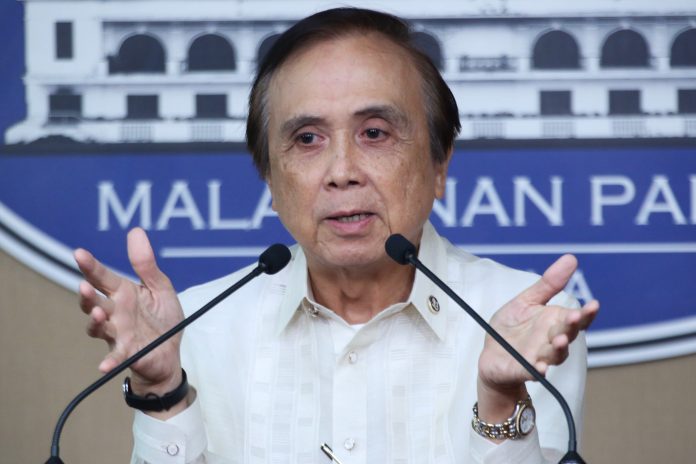
MANILA – The inflation surge coupled with typhoon devastation are only temporary setbacks for the Philippine economy and its poverty reduction program, Socioeconomic Planning secretary Ernesto Pernia said.
In a press conference during the Philippine Economic Briefing, Pernia said the government has set immediate and short-term measures to resolve price pressures, also being exacerbated by recent weather disturbances.
“Inflation, of course, and also the destruction brought by typhoons are going to be temporary or transient gust of winds that will slow the progress in poverty reduction. But these are temporary,” said Pernia, who is also the director general of National Economic and Development Authority.
He noted that the country is “better than on track” in its goal of becoming an upper-middle income economy, as the Philippines will achieve this income level by next year.
By the World Bank’s definition, upper-middle income economies have gross national income (GNI) per capita between USD3,896 and USD12,055. “We are just below the USD3,900,” Pernia said. “By 2019, even we grow only at 4.4 percent per capita instead of 4.9 percent, which has been the case in the past several years, it will hit over USD4,000 per capita by 2019.”
The economic manager added that the Philippine economy continues to increase with growth trajectory on “sharp upward direction”.
He mentioned that the economy now has broader growth base, not just driven by consumption, but also supported by investments and industry.
“The administration still has close to four years to go, and still there’s a lot of time for the small setbacks brought by temporary gust of headwinds,” Pernia said.
Inflation rate in August reached 6.4 percent, its highest for nearly a decade. Government data showed that price pressures in the past months were mainly caused by rising prices of food, particularly rice, fish, vegetables, and meat.
Pernia mentioned that among the immediate measures that the government has rolled out to curb inflation was the distribution of the available rice in the warehouses across the country. It is also in the process of importing more sacks of rice for the fourth quarter of the year.
For next year, the country is eyeing to import five million metric tons of rice to ensure that there will be shortage of rice for 2019.
To lower the prices of fish products, the government will allow imports of fish to be distributed directly to wet market vendors in Metro Manila and across the country, cutting the traders or “middle men”. The same measure will be done to lower prices of chicken products, Pernia said.
He added that the administration is working on an executive order that aims to arrest the increasing inflation, which is now beyond the government target.
As long term measure, the government aims to pass legislation that will liberalize the importation of the aforementioned food items including sugar, Pernia noted. (PNA)



